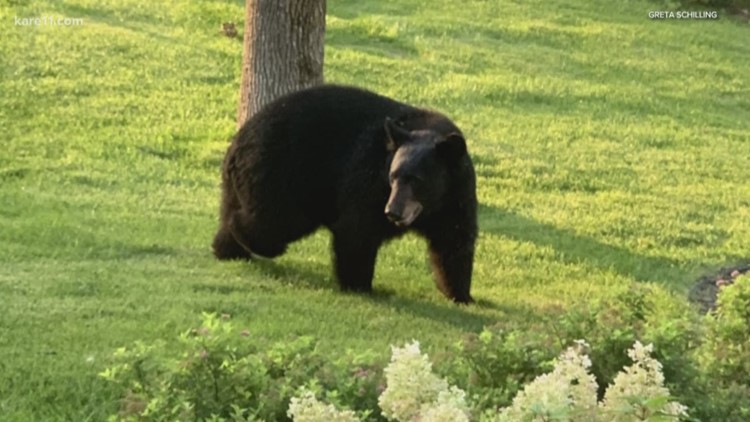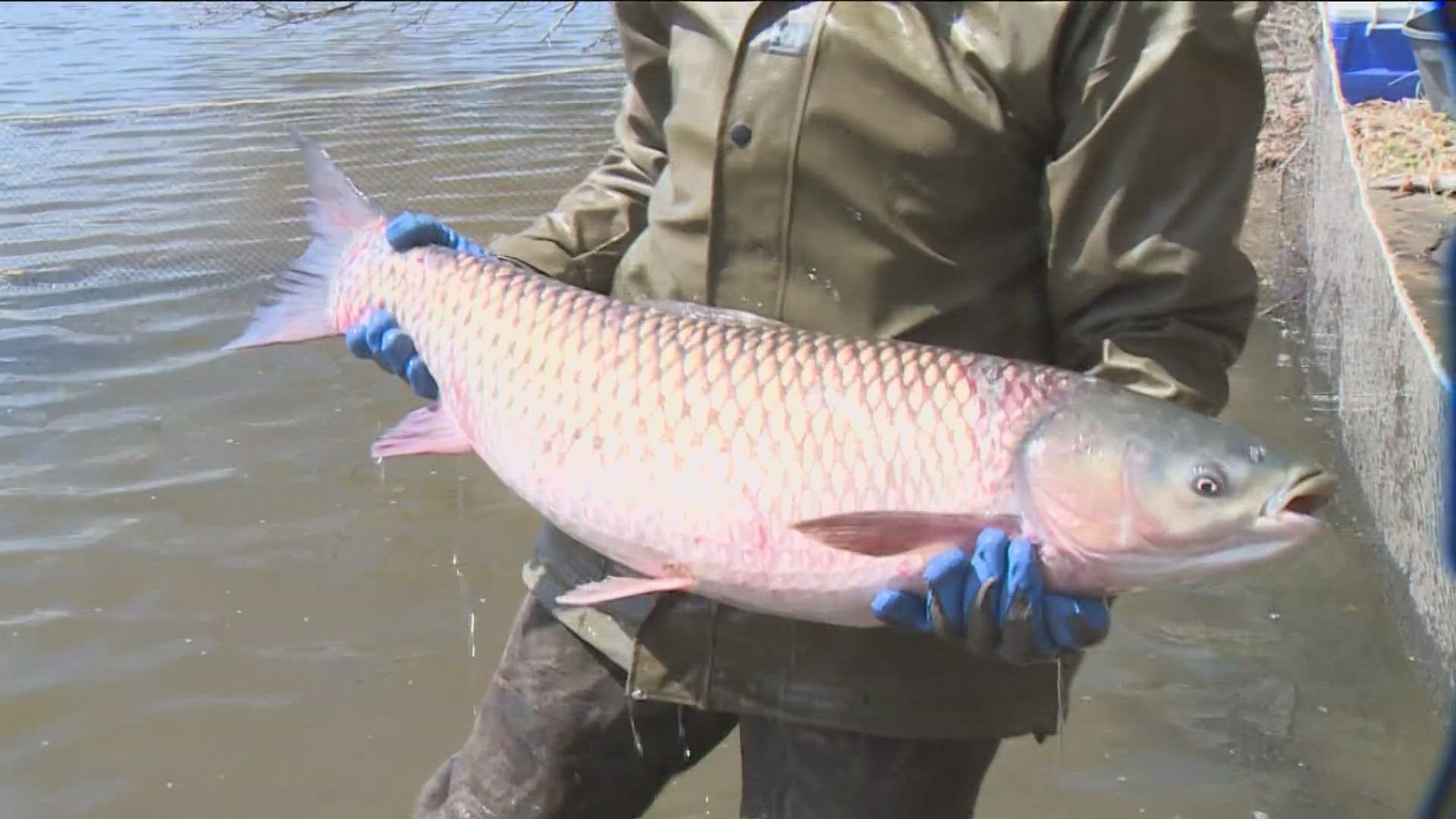ST PAUL, Minn. — Minnesota wildlife officials say a shortage of food in the wild is behind an increase in bear-human conflicts in parts of northeastern and north-central Minnesota.
A release from the Minnesota Department of Natural Resources (DNR) says because of that natural food shortage bears are gravitating toward food sources at homes, cabins and campsites.
“We’re asking people to remove food sources that could attract bears from their properties or campsites,” said Andrew Tri, a bear biologist for the Minnesota Department of Natural Resources. “It’s important that folks be extra vigilant in keeping trash and birdseed away from bears to ensure they don’t get an easy meal from what people leave out.”
Dry conditions this summer are blamed for the shortage of natural foods bears normally feed on. Instead, bears turn to sources like garbage, birdseed or coolers of food that are abundant, and often not protected.
Wildlife officials advise that dumpsters should be fitted with locking steel lids, and trash containers should be stored in a locked shed or garage. Property owners can also install an energized fence around a trash can to keep bears from getting into it. The DNR has information online about these fences.
Bird feeders in northeastern and north-central Minnesota should be removed until mid-November, and spilled seed should be immediately cleaned up. The DNR says if one person in a neighborhood feeds birds, a bear will remain in the area.
Campers, especially those who use remote campsites, should follow “Leave No Trace” principles. Plan ahead, pack out trash and dispose of it properly. Keep coolers out of sight in a locked vehicle or in bear-resistant containers. Carry bear spray and learn to use it properly if the need arises.
“If bears are in the area, let your neighbors, homeowners association or lake-owners association and fellow campers know about it so everybody keeps potential attractants away from bears,” Tri said. “Together, we can reduce conflicts with bears and avoid teaching them bad habits.”
Black bears are the only species that lives in Minnesota. They are more common in the forested region of northern Minnesota, but can live anywhere if they find suitable habitat. DNR wildlife officials say bears are usually shy and flee when encountered, but become bolder when their natural foods are in short supply.
It seems obvious, but don’t approach or try to pet a bear. Human injuries are rare but as with all wild animals, people need to be cautious and give bears plenty of space.
Avoid bear conflicts by following these tips
- Store garbage in bear-resistant garbage cans or dumpsters. Keep garbage inside a secure building (not a screened porch) until the morning of pickup.
- If there is not a secure building to put bear attractants in, erect an energized fence around trash or any other item attractive to bears (e.g., fruit trees, animal feed, gardens and compost piles).
- When camping, pack out trash, dispose of it properly, and store food in bear-resistant containers or in a locked vehicle or camper.
- Avoid feeding birds from April 1 to Nov. 15.
- If you still wish to feed birds, hang birdfeeders 10 feet up and 4 feet out from the nearest trees. Use a rope and pulley system to refill birdfeeders, and clean up spilled seeds daily.
- Do not leave food from barbecues and picnics outdoors, especially overnight. Standard coolers are not bear-proof, but there are lockable, bear-resistant models available.
- Pick fruit from your trees and collect any fallen fruit promptly. If not feasible to pick all the fruit, protect trees from damage by using an energized fence.
If bear problems persist even after cleaning up food sources, contact the DNR Information Center at 651-296-6157 or 888-646-6367, or find wildlife area office contact information on the DNR website.



